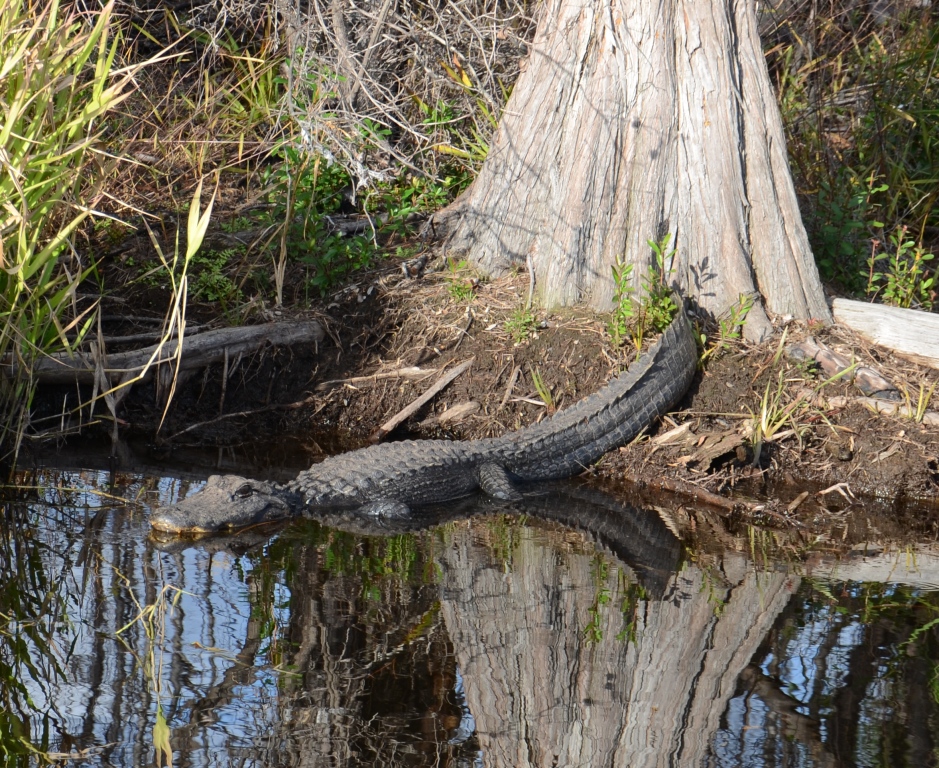Okefenokee Swamp

Okefenokee Swamp: A Vast Wilderness of Natural Wonder.
Okefenokee Swamp, spanning more than 400,000 acres across southeastern Georgia and northern Florida, is one of North America’s largest and most pristine wetlands. This extraordinary ecosystem, designated as a National Wildlife Refuge, is a haven for wildlife, a treasure trove of biodiversity, and a fascinating destination for nature enthusiasts, photographers, and adventurers alike.
A Brief History of the Okefenokee Swamp
The name “Okefenokee” comes from a Native American term meaning “land of trembling earth,” a reference to the floating peat mats that shift and quiver underfoot. The swamp has a long and storied history, serving as a home to Native American tribes, a refuge for runaway enslaved people, and a source of inspiration for folklore and storytelling.
In the early 20th century, the swamp faced threats from logging and development. However, conservation efforts led to its establishment as a National Wildlife Refuge in 1937, ensuring its protection as a vital natural resource. Today, the swamp remains a symbol of wild, untamed beauty and a testament to the importance of environmental preservation.
What Makes the Okefenokee Unique?
Diverse Ecosystems
The Okefenokee features a mosaic of habitats, including blackwater rivers, cypress forests, open prairies, and floating islands of vegetation. Each supports a unique array of plants and animals.Rich Wildlife
The swamp is home to more than 400 species of animals, including:- Alligators: A keystone species in the swamp.
- Sandhill Cranes: Majestic birds often seen wading in shallow waters.
- Otters, Turtles, and Frogs: Common sights along the waterways.
- Endangered Species: Such as the red-cockaded woodpecker and indigo snake.
Unparalleled Scenic Beauty
The swamp’s dark, tannin-stained waters reflect the twisted cypress trees and vibrant skies, creating stunning views at every turn.
Things to Do in the Okefenokee Swamp
Paddling and Boating
Explore the swamp’s intricate waterways by canoe, kayak, or motorboat. Trails range from short loops to multi-day routes through remote wilderness areas.Wildlife Observation
Bring your binoculars! The swamp is a paradise for birdwatchers and wildlife enthusiasts, with ample opportunities to spot alligators, wading birds, and more.Hiking
Trails such as the Chesser Island Boardwalk and Ridley Island Loop offer a chance to explore the swamp on foot while enjoying its unique flora and fauna.Photography
Capture the hauntingly beautiful landscapes, from misty sunrises over the water to close-up shots of wildlife.Educational Programs
The visitor centers at Stephen C. Foster State Park, the Okefenokee National Wildlife Refuge, and other access points offer exhibits, films, and ranger-led programs to enhance your understanding of the swamp’s ecosystem and history.Camping
Campgrounds and remote platforms within the swamp allow for a truly immersive experience, especially for paddlers seeking solitude under the stars.



Park Fees And Details
Why Visit the Okefenokee Swamp?
The Okefenokee Swamp is more than just a wetland; it’s a living, breathing ecosystem teeming with life and history. Whether you’re paddling through its waterways, observing its rich wildlife, or simply soaking in its serene beauty, the swamp offers an unforgettable experience.
Visit the Okefenokee and discover the magic of this ancient and untamed wilderness. It’s a journey into the heart of one of Georgia’s most remarkable natural treasures.
Visitor Information
The Okefenokee Swamp straddling the Georgia–Florida border is a true natural wonder that guest enjoy from around the globe.
A majority of the swamp is protected by the Okefenokee National Wildlife Refuge and the Okefenokee Wilderness. The Okefenokee Swamp is considered to be one of the Seven Natural Wonders of Georgia
The swamp provides an important economic resource to southeast Georgia and northeast Florida.About 400,000 people visit the swamp annually, with many from distant locations such as Germany, the United Kingdom, France, Japan, China and Mexico.
Service providers at the refuge entrances and several local outfitters offer guided tours by motorboat, canoe, and kayak.
There are four public entrances:
Suwannee Canal Recreation Area at Folkston, Georgia
Kingfisher Landing at Race Pond, Georgia
Stephen C. Foster State Park at Fargo, Georgia
Suwannee Sill Recreation Area at Fargo, Georgia
The Okefenokee Swamp straddling the Georgia–Florida border is a true natural wonder that guest enjoy from around the globe.
A majority of the swamp is protected by the Okefenokee National Wildlife Refuge and the Okefenokee Wilderness. The Okefenokee Swamp is considered to be one of the Seven Natural Wonders of Georgia
The swamp provides an important economic resource to southeast Georgia and northeast Florida.About 400,000 people visit the swamp annually, with many from distant locations such as Germany, the United Kingdom, France, Japan, China and Mexico.
Service providers at the refuge entrances and several local outfitters offer guided tours by motorboat, canoe, and kayak.
Okefenokee National Wildlife Refuge2700 Suwannee Canal RoadFolkston, GA 31537
Tel: (912) 496-7836 Email:okefenokee@fws.gov
Richard S. Bolt Visitor CenterSPRING Schedule(effective March 1 – May 31)Open DAILY, 9:00 a.m-4:00 p.mSwamp Island Drive,OPEN: ½-hour before sunrise every dayCLOSE: 7:30 pm – March 1 through October 315:30 pm – November 1 through end of FebruaryClosed Thanksgiving Day and Christmas Day
